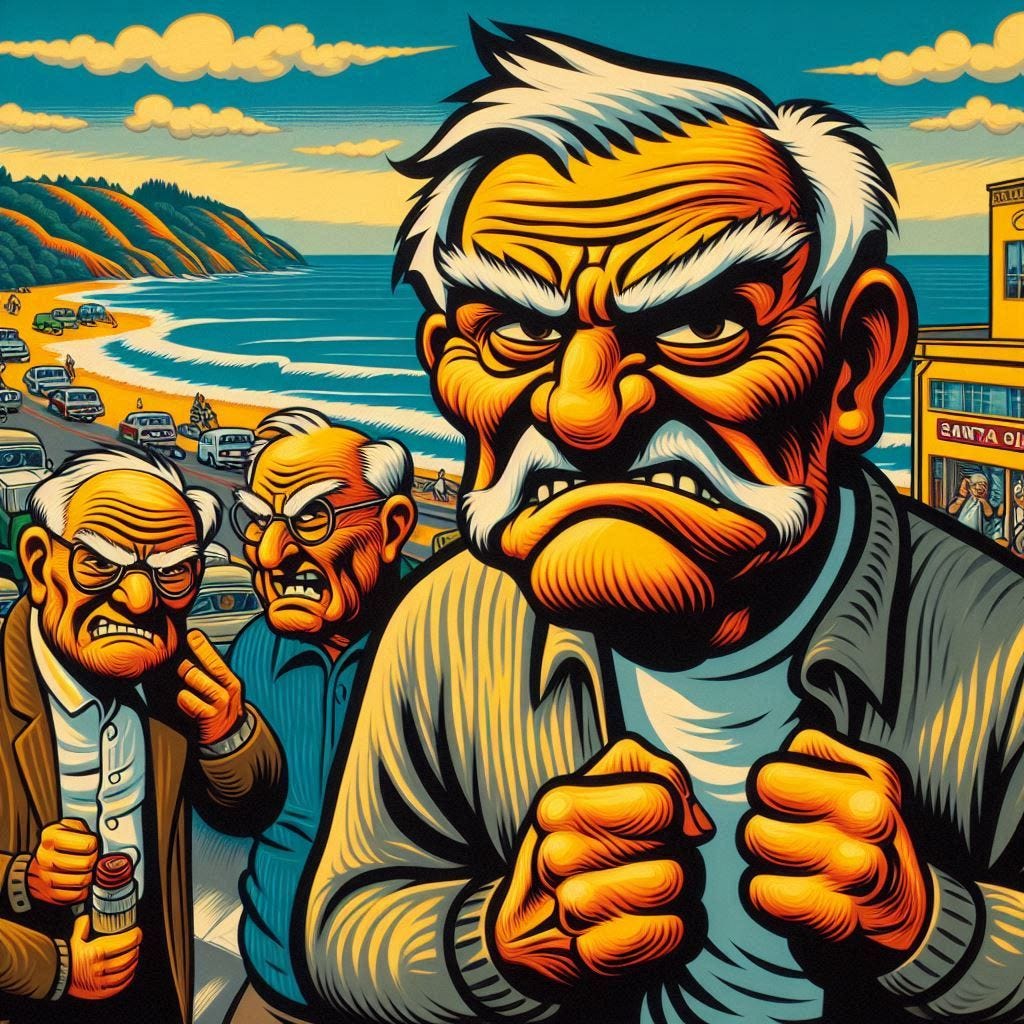The Mysteries of History (June 3 Edition)
Zoot Suit Riots; Rock 'n' Roll Banned; Tiananmen Square
“Those who cannot remember the past are condemned to repeat it.” — Spanish-American philosopher George Santayana, 1905
1943 — Zoot Suit Riots
public domain image from wikimedia commons
On this date in 1943, in the middle of World War 2, what became known as “The Zoot Suit Riots” began in Los Angeles, California.
The “Zoot Suit” is in some ways not unlike a more modern fashion: baggy pants, oversized jacket, and (something different) a porkpie hat to top it off:
The “riot” didn’t start specifically because of the sartorial splendor of those wearing that garb, but because some zoot-suited people had beat up a sailor, and the sailors responded en masse, bursting into bars, cafes, and movie theaters.
The enraged, revenge-minded sailors marched through downtown Los Angeles, carrying clubs and other smashing-and-maiming weapons, attacking anyone wearing a Zoot Suit, regardless of their age or their demeanor (some targeted were as young as twelve years old).
While ostensibly acts of reprisal, “defending their own,” the Zoot Suit Riots were in actuality a culmination of long-simmering racial tensions. Those who wore Zoot Suits were typically non-whites: Latinos and Blacks. The rioters invaded East L.A. (primarily Mexican) and Watts (primarily Black) neighborhoods.
It was also considered by some to be unpatriotic to wear the woolen zoot suits because, due to wool being rationed (as it was needed for the war effort), manufacturing Zoot Suits had been banned in 1942, and even continuing to wear them was viewed by many as disrespectful. It didn’t help that the news media portrayed “pachucos” (what the Zoot Suit wearing youth called themselves) to be dangerous.
The multitudes of the mayhem-minded mob increased as civilians joined in the melees, even coming to Los Angeles from other areas to join in.
That the maniacal mob was primarily racist in nature rather than fashion critics, many of those assaulted were not even wearing Zoot Suits. The news media referred to the attackers as heroes. The police arrested more of the attackees than the attackers.
The Riots were finally quelled only after the military banned its personnel from Los Angeles, with the exception of military police patrolling the streets.
Fortunately, although many were injured, nobody was killed during the several days of rioting. In the aftermath of the social unrest, local authorities subsequently banned the wearing of Zoot Suits on the streets of Los Angeles.
A report on the causes of the Riots concluded that racism, the incendiary news coverage, and the “uneven” police response all played a role.
Questions: What other fashions have been viewed as dangerous throughout history? How about in your lifetime? What do you think about banning certain modes of dress — is it ever justified? If so, when, and why?
1956 — Rock ‘n’ Roll Banned in Santa Cruz, California
image generated using Google Gemini
Of all places, the liberal and hippie-ish Santa Cruz, California banned rock ‘n’ roll on this date in 1956, at a time when Elvis, Chuck Berry, and Little Richard were making hit records such as “Heartbreak Hotel” (Elvis), “Roll Over Beethoven” (Berry), and “Tutti Frutti” (Richard).
Of course, people could still listen to Rock ‘n’ Roll in their own homes and cars, but the music was completely banned from public gatherings. The reason the squares/old fuddy-duddies gave for the draconian crackdown was that they considered the rollicking, beat-heavy music to be “detrimental to both the health and morals of our youth and community.”
The ban was enacted the day after a local rock concert featuring an L.A. band who had a regional hit named “Pachuko Hop” (see the previous item about the Zoot Suit Riots for more on “pachucko”). Santa Cruz police entered the auditorium and broke up the party, sending the young concertgoers home because of what they described as a crowd “engaged in suggestive, stimulating and tantalizing motions induced by the provocative rhythms of an all-negro band.”
Why the police believed the ethnical makeup of the band (Chuck Higgins and his Orchestra) was relevant is left as an exercise to the reader.
Two weeks later, copycat bans were enacted in Asbury Park, New Jersey (Bruce Springsteen’s old stomping grounds — he was six years old at the time of this brouhaha) and San Antonio, Texas.
Questions: Have you heard the 1957 Danny and the Juniors song “Rock and Roll Is Here to Stay”? Do you consider rock music to be a bad influence? Do you consider any style or genre of music to be detrimental to peace and order? If so, why?
1989 — Tiananmen Square Protests Violently Squelched
public domain image from wikimedia commons
Following several weeks of anti-government protests, Chinese authorities brutally and mercilessly cracked down on the million gathered at Tiananmen Square on this date in 1989. Hundreds of protesters were killed and thousands arrested.
In the ensuing weeks, an unknown number of the protesters were murdered by the Chinese government. The international response was one of outrage, and economic sanctions were imposed on China by the U.S. and others. The Chinese economy was, as intended, adversely affected, and by the end of 1990 many of those arrested had been freed and the sanctions were lifted.
Questions: Do you remember this incident? What were your thoughts about it? What are they now? Do you think there will be any dramatic changes within China or between China and other nations?









